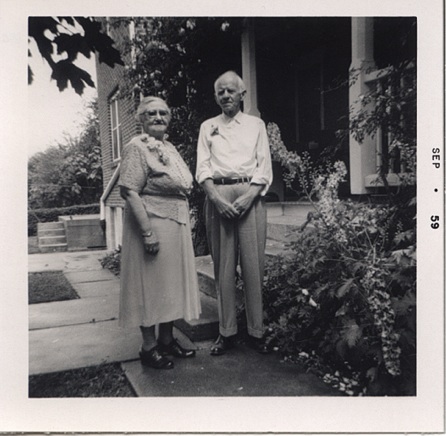I was a little premature with my sketch of the history of the Brackbill Farm two weeks ago. As you’ll recall, the farmhouse says it was built by Abraham and Barbara Hershey in 1857 (or maybe 1867–the sign isn’t very clear in the photo I took from the ground). And I was very excited to find the microfilmed deed books of Lancaster County so that I could start figuring out how it passed from their hands to my great-great grandfather Elam Brackbill.
Turns out that just reading the microfilm was akin to sequentially looking at sectors on a hard disk. If there was an organizational structure there, it wasn’t apparent to me–each book was chronologically ordered, but there was no relationship between book numbers. So I couldn’t even find which book had the deeds from the 1896-1897 timeframe that I guessed to be the date of sale of the farm.
The Internet to the rescue. The Southern Lancaster County Historical Society photographed the Indexes of Grantors for all those deeds, meaning if you know who sold the property, you can go to the photo pages, read the book number and page, punch them into the online microfilm reader, and read the deed. So I found four or five deeds relating to the estate of Abraham Hershey and his wife Barbara and started reading avidly.
And was crestfallen. Each of the deeds conveyed property, to heirs or others through sale, but all of the property was on the wrong side of Rt. 30, in Paradise or Strasburg, or in the townships of Eden and Bart. As near as I can tell, the family property’s mailing address should be in or near Salisbury Township, but so far none of the Abraham Hershey deeds have turned up in Salisbury.
The good news, I suppose, is that the indexes only represent the years up to about 1893, so it’s still possible that the second volume of the index will show a deed in about the right time period showing Elam Brackbill’s purchase of it. And I’m now certain that Elam purchased it; a newspaper record from 1905 talked about his residence in Salisbury Township. (Special hat tip to the Access Pennsylvania Digital Repository, a really well put together research site.)
So we’re not back to square one, but I still haven’t found the relevant information. It’s frustrating, knowing that it’s somewhere in that massive pile of microfilm and that I simply don’t have the key to find it.

